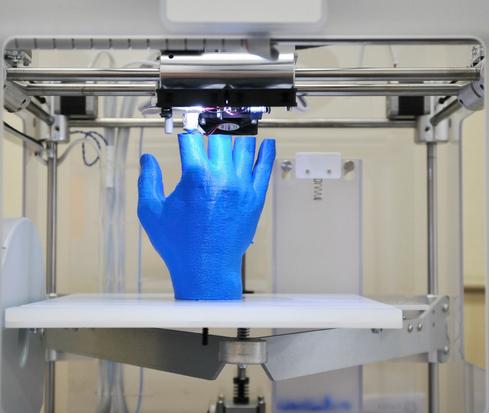Can 3D-Printed Fingers Help Police Solve A Murder?- Valutrics

(Click image for larger view and slideshow.)
Michigan police are taking an unusual tactic to solve a murder case. In hopes of revealing his killer, they’re working with a university to create 3D copies of the victim’s fingers in order to unlock his smartphone.
The victim’s fingerprints were already on file with the police department from an earlier, unrelated incident. However, the prints alone are not enough to unlock the phone. And the victim’s own fingers cannot be used, for reasons that will make you cringe. So, according to a report in the Daily Mail, police are working with Michigan State University to recreate the victim’s fingers using the university’s 3D printing lab.
The desire by law enforcement to acccess a locked smartphone has come up before, most notably in the high-profile case involving San Bernardino terrorist Syed Farook. In that case, FBI officials sought to unlock his iPhone. Farook , however, did not have a fingerprint reader, or Touch ID, on his iPhone 5C.
[ What you need to know about Apple and the FBI. Read Apple, FBI, Congress: 5 Burning Questions.]
In the Michigan murder case, the victim’s smartphone does have a fingerprint reader. However, the victim’s actual fingers cannot be used to swipe across the reader for several reasons. According to The Verge, the victim’s body is badly decomposed. And, according to the Daily Mail report, fingerprint readers may need more than the tissue ridge pattern of a user’s fingerprint.
While it is not clear whether the Michigan victim used an iPhone, recent versions of the device require the presence of an electrostatic charge when Touch ID is pressed, according to the Daily Mail. Humans who are deceased do not emit an electrostatic charge.
As a workaround, Michigan State University Professor Anil Jain and his PhD student Sunpreet Arora have been able to create 3D copies of the victim’s fingers with a thin layer of conductive metallic particles coating the plastic digits. This metallic material is designed to emit an electrostatic charge, the Daily Mail reported. Currently, the 3D fingers are being tested in the lab, and the results are not known.

(Image: dreamnikon/iStockphoto)
3D fingers are the only the latest effort to potentially fool a fingerprint scanner. Other techniques have been used with more primitive materials, The Verge reported. Unlike Apple’s more recent iPhones, older versions of smartphones reportedly do not necessarily need the presence of an electrostatic charge to unlock a phone.
Even as the technology advances, legal precedent about unlocking devices in the event of a criminal case continues to evolve. For example, a recent court case in Los Angeles came down in favor of the FBI, which sought to compel a woman to use her fingerprint to unlock an iPhone. The court ruled that doing so would not violate the Fifth Amendment, which is designed to protect individuals from self-incrimination.
There will likely be no opposition to the use of the deceased victim’s fingerprints – either from the courts or the victim. Dead men don’t talk, after all. The real question is what this means for the privacy of the individuals whose personal details, communications, and other information might be contained on the victim’s phone. Does finding his killer override the expectation of privacy for those who communicated with him? Tell us what you think in the comments section below.
Dawn Kawamoto is a freelance writer and editor. She is an award-winning journalist who has written and edited technology, management, leadership, career, finance, and innovation stories for such publications as CNET’s News.com, TheStreet.com, AOL’s DailyFinance, and The … View Full Bio
